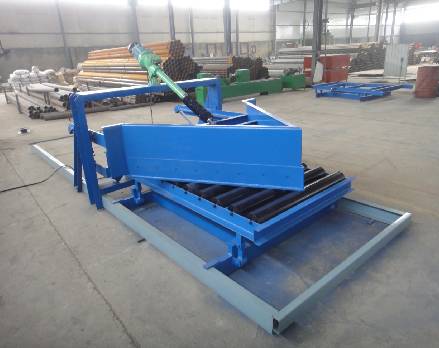 Afrikaans
Afrikaans  Albanian
Albanian  Amharic
Amharic  Arabic
Arabic  Armenian
Armenian  Azerbaijani
Azerbaijani  Basque
Basque  Belarusian
Belarusian  Bengali
Bengali  Bosnian
Bosnian  Bulgarian
Bulgarian  Catalan
Catalan  Cebuano
Cebuano  Corsican
Corsican  Croatian
Croatian  Czech
Czech  Danish
Danish  Dutch
Dutch  English
English  Esperanto
Esperanto  Estonian
Estonian  Finnish
Finnish  French
French  Frisian
Frisian  Galician
Galician  Georgian
Georgian  German
German  Greek
Greek  Gujarati
Gujarati  Haitian Creole
Haitian Creole  hausa
hausa  hawaiian
hawaiian  Hebrew
Hebrew  Hindi
Hindi  Miao
Miao  Hungarian
Hungarian  Icelandic
Icelandic  igbo
igbo  Indonesian
Indonesian  irish
irish  Italian
Italian  Japanese
Japanese  Javanese
Javanese  Kannada
Kannada  kazakh
kazakh  Khmer
Khmer  Rwandese
Rwandese  Korean
Korean  Kurdish
Kurdish  Kyrgyz
Kyrgyz  Lao
Lao  Latin
Latin  Latvian
Latvian  Lithuanian
Lithuanian  Luxembourgish
Luxembourgish  Macedonian
Macedonian  Malgashi
Malgashi  Malay
Malay  Malayalam
Malayalam  Maltese
Maltese  Maori
Maori  Marathi
Marathi  Mongolian
Mongolian  Myanmar
Myanmar  Nepali
Nepali  Norwegian
Norwegian  Norwegian
Norwegian  Occitan
Occitan  Pashto
Pashto  Persian
Persian  Polish
Polish  Portuguese
Portuguese  Punjabi
Punjabi  Romanian
Romanian  Russian
Russian  Samoan
Samoan  Scottish Gaelic
Scottish Gaelic  Serbian
Serbian  Sesotho
Sesotho  Shona
Shona  Sindhi
Sindhi  Sinhala
Sinhala  Slovak
Slovak  Slovenian
Slovenian  Somali
Somali  Spanish
Spanish  Sundanese
Sundanese  Swahili
Swahili  Swedish
Swedish  Tagalog
Tagalog  Tajik
Tajik  Tamil
Tamil  Tatar
Tatar  Telugu
Telugu  Thai
Thai  Turkish
Turkish  Turkmen
Turkmen  Ukrainian
Ukrainian  Urdu
Urdu  Uighur
Uighur  Uzbek
Uzbek  Vietnamese
Vietnamese  Welsh
Welsh  Bantu
Bantu  Yiddish
Yiddish  Yoruba
Yoruba  Zulu
Zulu Enhancing Conveyor Efficiency with Innovative Pulley Lagging Solutions for Optimal Performance and Durability
Understanding Pulley Lagging Enhancing Efficiency and Protection
In the industrial world, pulleys play a critical role in various mechanical systems, including conveyor belts, hoisting mechanisms, and other machinery that requires the transfer of motion and force. However, the continuous operation of these components can lead to wear and tear, potentially compromising efficiency and safety. This is where pulley lagging comes into play.
Pulley lagging refers to the process of applying a protective layer on the surface of a pulley, typically made from materials such as rubber, polyurethane, or ceramic. The primary purpose of lagging is to enhance the grip between the pulley and the conveyor belt, thereby improving the overall performance of the system. In this article, we will delve into the benefits of pulley lagging, the different materials used, and the factors to consider when selecting the appropriate lagging for specific applications.
Benefits of Pulley Lagging
1. Improved Traction One of the foremost advantages of pulley lagging is the increased traction it provides. By enhancing the friction between the pulley and the belt, lagging minimizes slippage, ensuring that the belt maintains its grip, even under heavy loads or adverse conditions.
2. Extended Equipment Life Lagging acts as a protective barrier for the pulley itself. By reducing wear caused by direct contact with the belt, lagging can extend the lifespan of the pulley. This ultimately leads to decreased maintenance costs and less frequent replacements.
3. Reduced Noise Levels The right lagging material can also help dampen sound, leading to a quieter operation of machinery. This is particularly beneficial in environments where noise regulations are stringent or when operator comfort is a concern.
4. Enhanced Resistance to Environmental Factors Depending on the material used, lagging can offer resistance to heat, chemicals, and moisture. This makes lagging essential in industries where pulleys are exposed to harsh conditions, such as mining or food processing.
Materials Used for Pulley Lagging
The choice of material for pulley lagging largely depends on the specific requirements of the application. Here are a few common materials
pulley lagging

- Rubber Most commonly used due to its excellent grip and flexibility, rubber lagging is suitable for a wide range of temperatures and applications. Its resilience against wear makes it a popular choice for heavy-duty operations.
- Polyurethane Known for its durability and resistance to abrasion, polyurethane lagging is ideal for applications requiring high performance in adverse conditions. It is often used in industries where chemical exposure is a concern.
- Ceramic For environments where extreme conditions exist, such as very high speeds or significant wear, ceramic lagging can provide exceptional durability. It’s typically used in specialized applications that require maximum grip and minimal wear.
Factors to Consider When Selecting Lagging
When choosing the right pulley lagging, several factors must be taken into account
- Application Type Consider the specific function of the pulley within the system. Different applications may require different levels of grip, wear resistance, and flexibility.
- Environmental Conditions Assess the environment in which the pulley operates. Factors like temperature, moisture, and exposure to chemicals will influence the optimal material choice.
- Cost vs. Benefit While high-quality lagging materials may come with a higher initial cost, the long-term benefits such as reduced downtime and maintenance costs often justify the investment.
Conclusion
Pulley lagging is a vital component in enhancing the performance and longevity of pulley systems. By improving traction, extending equipment life, and reducing operational noise, the right lagging material can significantly benefit various industrial applications. When selecting the appropriate lagging, it is essential to consider the specific requirements of the application and the environmental conditions involved. With the right approach, pulley lagging can lead to increased efficiency and safer operations in a wide range of industries.
-
Revolutionizing Conveyor Reliability with Advanced Rubber Lagging PulleysNewsJul.22,2025
-
Powering Precision and Durability with Expert Manufacturers of Conveyor ComponentsNewsJul.22,2025
-
Optimizing Conveyor Systems with Advanced Conveyor AccessoriesNewsJul.22,2025
-
Maximize Conveyor Efficiency with Quality Conveyor Idler PulleysNewsJul.22,2025
-
Future-Proof Your Conveyor System with High-Performance Polyurethane RollerNewsJul.22,2025
-
Driving Efficiency Forward with Quality Idlers and RollersNewsJul.22,2025





























